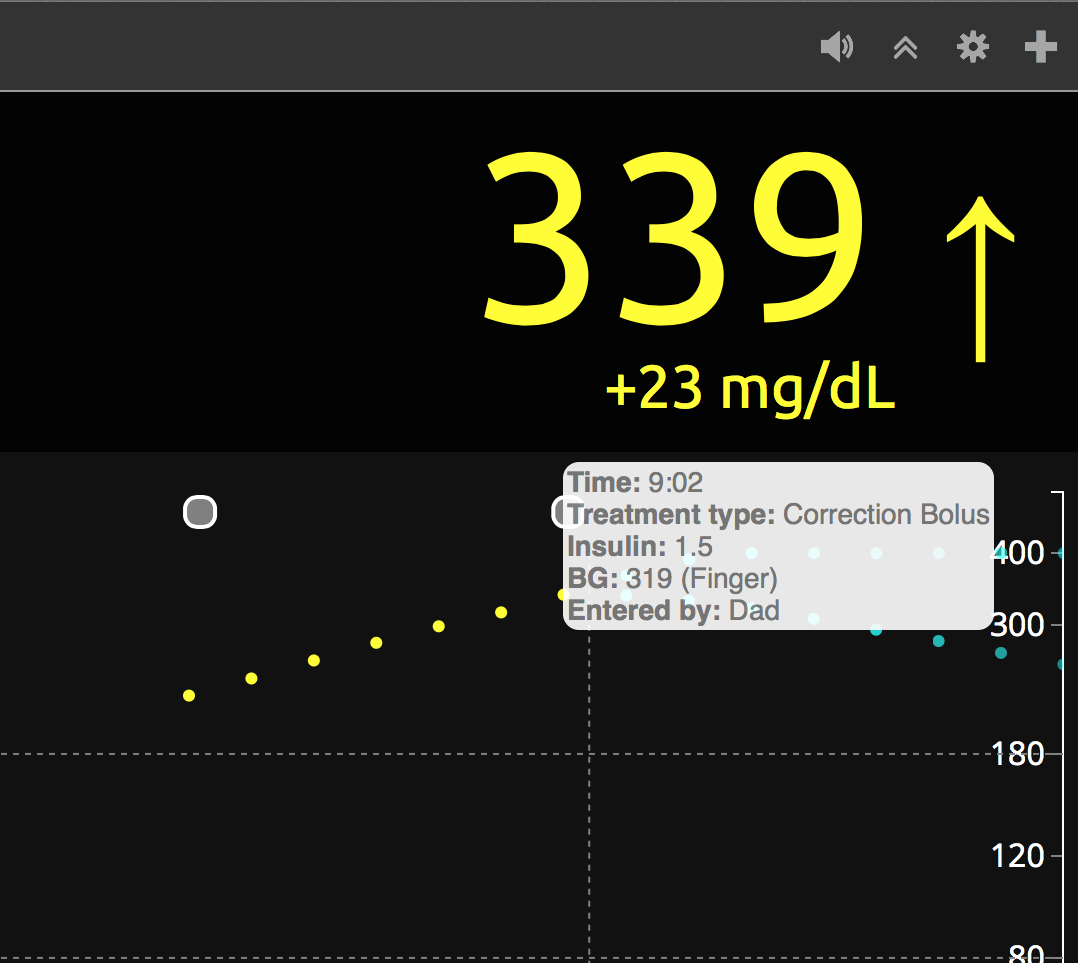| This is what the Nightscout Project app looks like |
One type of assistive technology that can be an enormous help to students with Diabetes is the app The Nightscout Project. This app and website was designed by parents of children with Diabetes and what it does is transmit the data from their child's CGM (continuous glucose monitoring system) to any device with the app downloaded and connected to the CGM. This could be a huge help if a teacher has a student with Diabetes because they could download the app and have access to the child's blood sugars and be able to prevent things from escalating to dangerous levels. It also could help the teacher understand if a student with Diabetes is acting out or not preforming their best on assignments, The Nightscout Project can be found here.
 |
| If a teacher got this alarm form the CGM then they would know that the child needs insulin and to drink water. |
 |
| This is a Diabetic Alert Puppy |
Another type of assistive technology that is available to Type One Diabetics is the Diabetic Alert Dogs. These are service dogs trained to smell when a child's blood sugar is going up or down and they alert the child. Diabetic Alert Dogs are really good for children who resist needles and are tired of being stuck which is a downside of using the CGM that does along with the Nightscout Project app. Unfortunately Diabetic Alert Dogs are around 10,000 dollars and are not covered by insurance.
Some things to look forward to in the future of assistive technology for Diabetics is the bionic pancreas. This is where the insulin pump and the CGM work together in effort to lower the amount of stress put on the child or person with Diabetes. This would help control blood sugars more and allow the individual to live a life more like a child without Diabetes.
References:
Later Gators,
Katie :)
No comments:
Post a Comment